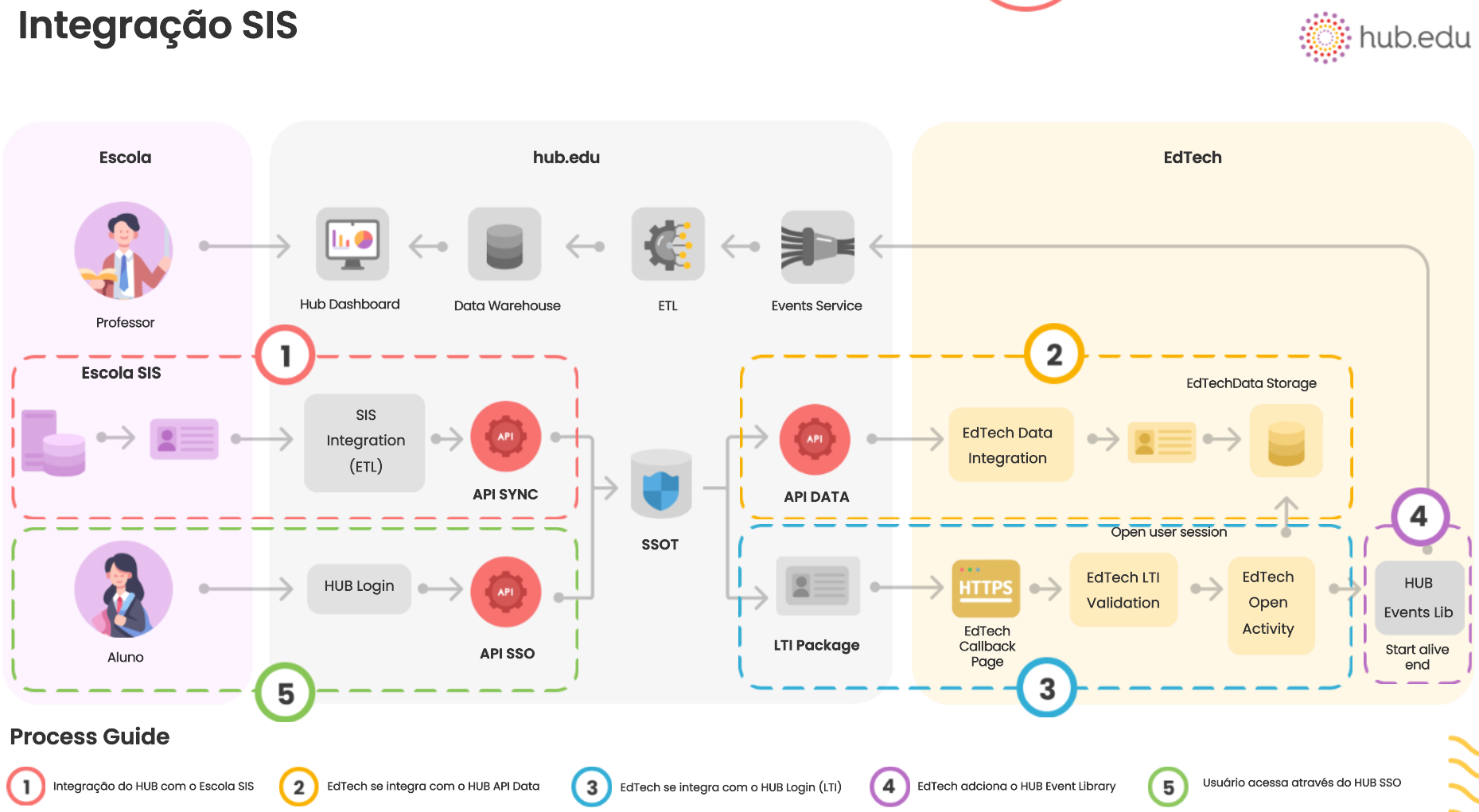EdTech Integration
Integration Flows
Overview
After the Certification Process, we began the process of developing the integration and working together. We provide the necessary support for the completion and testing in the sandbox environment provided.
Quick Start
Small guide for quickly and efficiently integrating data. It covers key concepts, best practices, and includes tips for troubleshooting and optimizing performance. This guide helps developers and data engineers to quickly understand the data integration process and start integrating data into their systems with minimal delay.
Integration Model

Tech Integration Diagram
Integrations
There are 3 points of integration between an EdTech and the HUB.Edu platform
- Data/Registration Integration
- Login Integration
- Event Integration
Pull-Based APIsThe integration APIs are pull-based, so the EdTech must query the data and create the necessary integration middleware.
Data Integration
This integration is where the registration data authorized by the educational institution is requested by the EdTech and integrated into the EdTech data model.
For this integration, the API Data should be used, responsible for returning the modified data according to the information authorized by the institution and the min_date date requested by the EdTech.
Login Integration
Integration necessary to identify the user being sent to the EdTech solution. Once the student already has a registration in the EdTech system (via data integration), this step must be done both to ensure that there is a step of trust between the EdTech and the HUB and to identify and thus raise the user's session in the EdTech solution.
The entire process is executed using the 📖 LTI standard.
Event Integration
Where the user's events on the EdTech are integrated. It also advises to see Learning Analytics for more details.
Updated 7 months ago